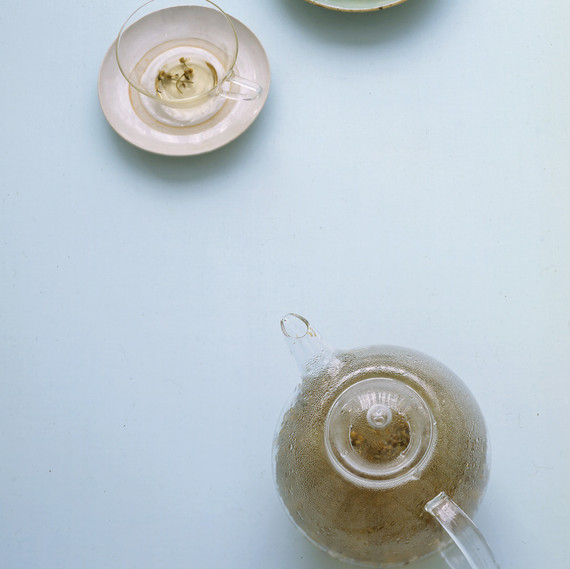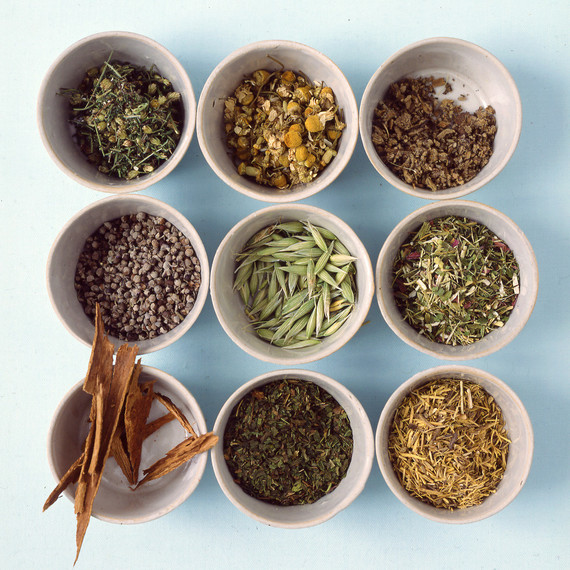Vytvořte si vlastní směsi bylinných čajů – zde je to, co potřebujete vědět

Při léčivém čaji existuje nějaký alchymický dar, jelikož se objevují elementární síly ohně, vody a rostlinného života. Vytváříte směs kořenů a listů, květin a semen, přelíte vařícími vroucími vodami a sledujte je párou a vaříte. Dýcháte v ostře vonných rostlinných olejích a ochutnejte silné vaření, důvěřujte, že vám ulehčí to, co vás zbaví. Když uděláte – spíše než jednoduše – vaše léky, samotný čin je léčivý sám o sobě.
Míchání čaje je jedním z nejjednodušších a nejuznávanějších způsobů, jak se znovu připojit k věku staré praxe bylinné medicíny, léčebného systému, na který se spoléhá každá kultura světa. Ačkoli to může znít jako tajemné umění, směsi, které vytvoříte – pro každodenní onemocnění, jako je běžná chlad, stres, PMS, poruchy trávení a sezónní alergie – jsou poměrně jednoduché, vyrobené z bezpečných, všestranných a snadno dostupných bylin. V tomto procesu se seznámíte se základními principy a technikami pro míchání a vaření, které rostlinné léčitelé užívají po staletí.

VYTVOŘENÍ HERBÁLNÍ HARMONIE
Možná jste zkusili mátový čaj kvůli zažívacím potížím nebo zázvoru za studenou. Tyto jednobytové léčivé přípravky, známé herbalistům jako “jednoduché”, mohou být účinnou medicínou. Ale rostliny, jako lidé, se daří v komunitě. V přírodě zřídka rostou samy, ale rozvíjejí se v těsné blízkosti jednoho druhého. V léčivých směsích fungují synergicky, což znamená, že každá bylina zvyšuje účinky ostatních. Směs se stává více než součtem jeho částí. Vědět, které bylinky si vybrat a v jakém množství je věda a umění. Čaje by se měly řídit touto spolehlivou třídílnou metodou vytváření efektivních směsí, založené na práci proslulého bylinky Williama LeSassiera.
Primární byliny
Hlavní složky léčivých směsí jsou bylinky, které se přímo zabývají určitým zdravotním problémem. Primární byliny tvoří 70 až 80 procent směsi. V určitém čaji může být jedna nebo několik primárních bylin; v čaji pro dobré trávení, například peprmint a heřmánek – oba žaludeční dudlíky – jsou primární bylinky, zatímco ženský balancingový čaj obsahuje vitex, hormonový regulátor.
Podpůrné byliny
Druhotné přísady v léčivých směsích jsou zde, aby vyživovaly a podporovaly systém, často uklidňující a vyrovnávající účinky silnějších primárních bylin. Podpůrné byliny tvoří 20 až 30 procent směsi. Mnoho z nich má vysoký obsah minerálů a uklidňující látku nazývanou mucilage. Opět může jedna nebo více bylin obsadit tuto kategorii. V těchto směsích často uvidíte lékořice v kategorii podporující.
Katalyzátor Byliny
Obsahuje v malých množstvích, 5 až 10 procent směsi, katalytické byliny mají oteplovací nebo stimulující účinek na tělo a slouží k “aktivování” čaje. Za katalyzátory se často používají zázvor, máta peprná a skořice. Většina bylin může hrát více než jednu roli. Například mátová jablka je primární bylinkou ve společném chladném čaji, ale katalyzátorem v stresu. Na rozdíl od léků, které obvykle obsahují jednu nebo dvě účinné složky se specifickou agendou, jsou bylinky tvořeny tisíci přísad. Vzhledem k jejich komplexní chemické povaze většina bylin pracuje v těle mnoha způsoby a může být použita k různým účelům.
Získejte DIY Bylinné čajové recepty
Seznamte se s bylinami používanými v receptech!

26.04.2023 @ 23:14
As an AI language model, I do not have a specific language or cultural background. However, I can provide a translation of the text into English:
Photography: Sang An
There is an alchemical gift in medicinal tea, as elemental forces of fire, water, and plant life emerge. You create a mixture of roots and leaves, flowers and seeds, pour boiling water over them, and watch them steam and brew. You breathe in sharply scented plant oils and taste the strong brew, trusting that it will ease what ails you. When you make – rather than simply take – your medicine, the act itself is healing.
Mixing tea is one of the simplest and most revered ways to reconnect with the age-old practice of herbal medicine, a healing system relied upon by every culture in the world. Although it may sound like a mysterious art, the blends you create – for everyday ailments like the common cold, stress, PMS, digestive disorders, and seasonal allergies – are relatively simple, made from safe, versatile, and readily available herbs. In this process, you will learn the basic principles and techniques for blending and brewing that herbalists have used for centuries.
Creating Herbal Harmony
You may have tried peppermint tea for digestive problems or ginger for a cold. These single-herb remedies, known to herbalists as “simples,” can be effective medicine. But plants, like people, thrive in community. In nature, they rarely grow alone but flourish in close proximity to one another. In medicinal blends, they work synergistically, meaning each herb enhances the effects of the others. The blend becomes more than the sum of its parts. Knowing which herbs to choose and in what amounts is both science and art. Teas should follow this reliable three-part method for creating effective blends, based on the work of renowned herbalist William LeSassier.
Primary Herbs
The main components of medicinal blends are herbs that directly address a specific health issue. Primary herbs make up 70 to 80 percent of the blend. In a given tea, there may be one or several primary herbs; in a tea for good digestion, for example, peppermint and chamomile – both stomach soothers – are primary herbs, while a womens balancing tea contains vitex, a hormone regulator.
Supporting Herbs
Secondary ingredients in medicinal blends are there to nourish and support the system, often with calming and balancing effects to counteract the stronger primary herbs. Supporting herbs make